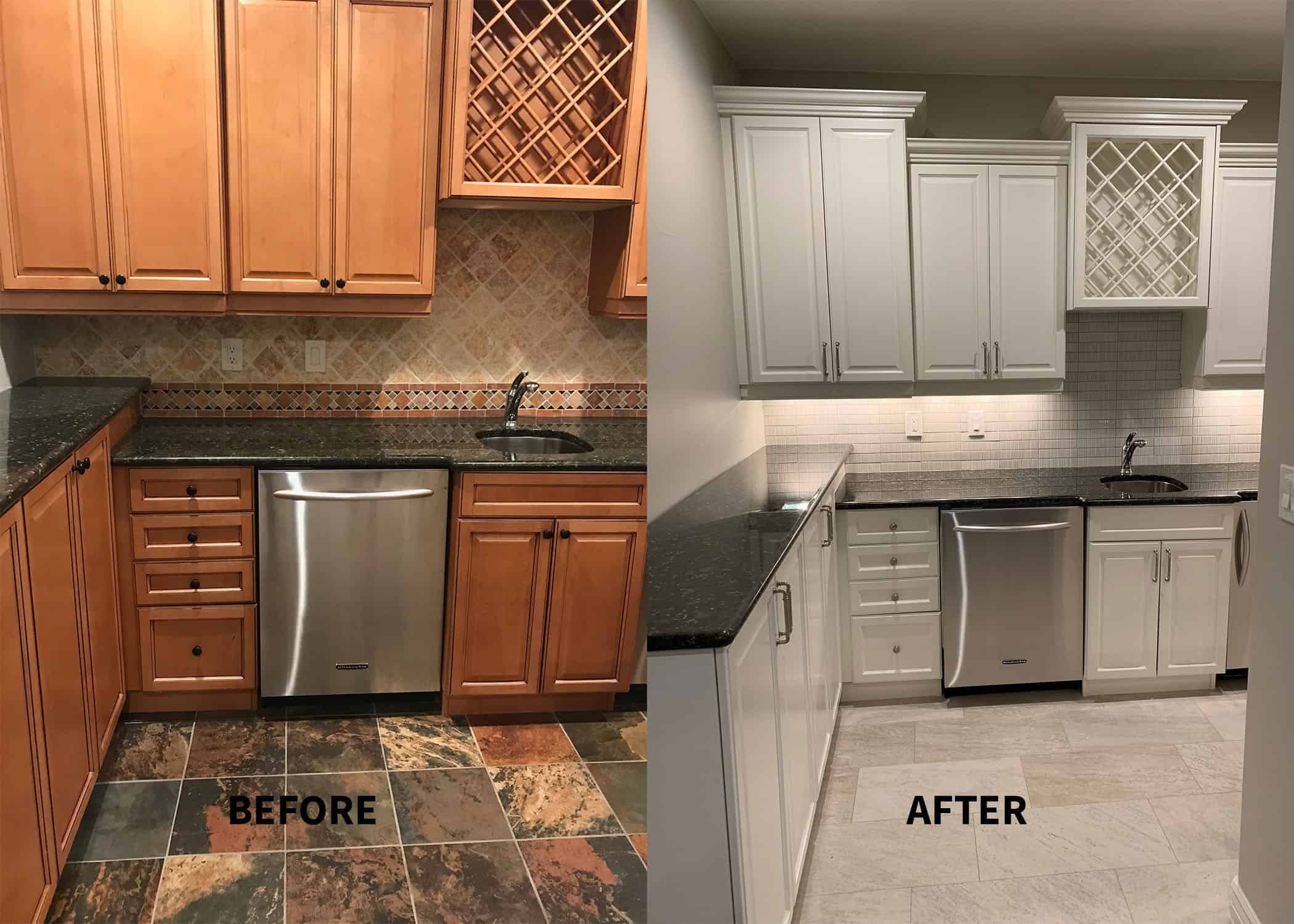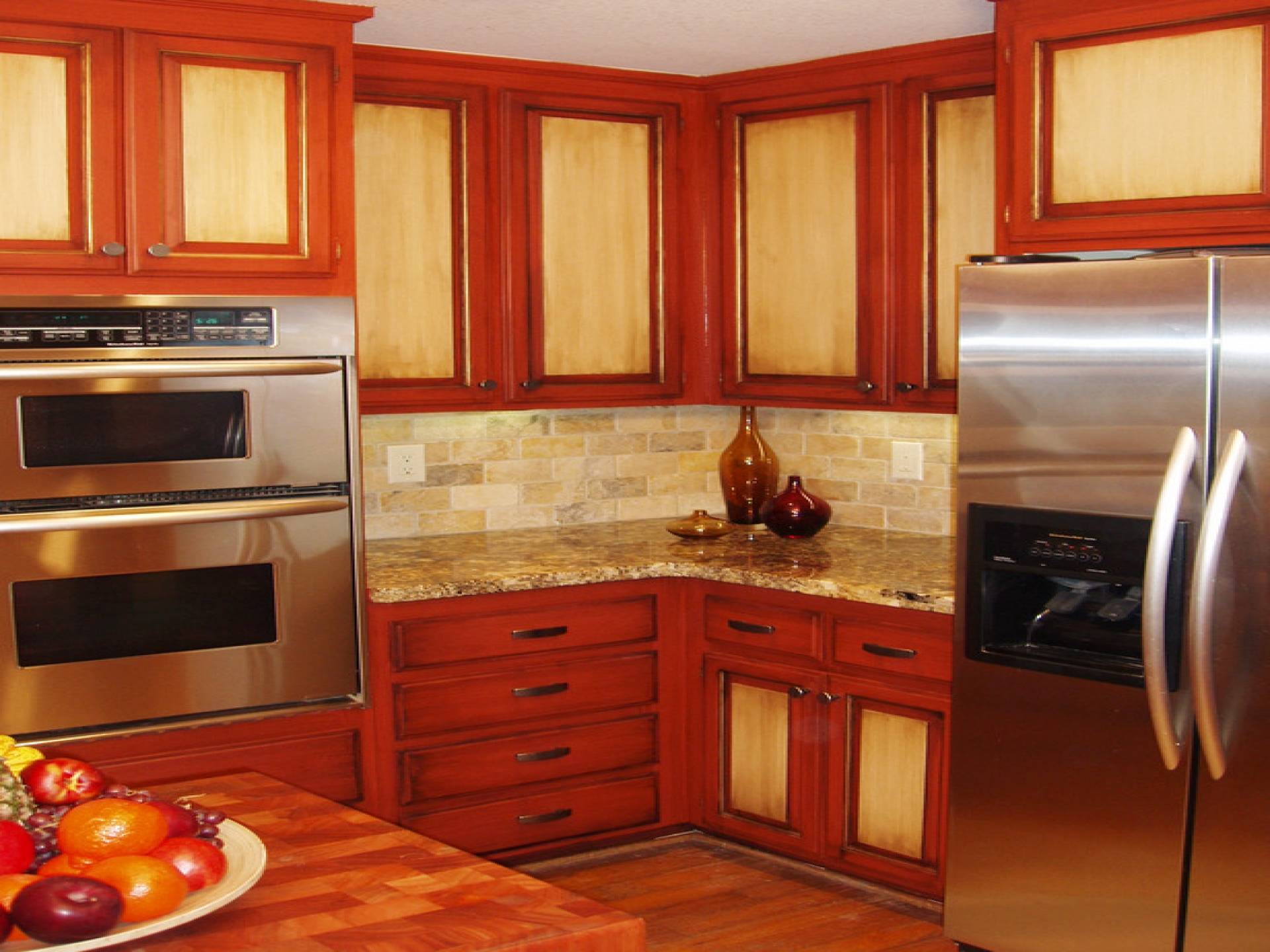Types of Clear Coats for Painted Cabinets

A whisper of sheen, a final embrace, the clear coat seals the fate of painted wood, a delicate dance between protection and beauty. Its choice, a melancholic reflection on the permanence of our creations, each type a different song sung on the surface of our carefully crafted cabinets.
Clear coat for painted cabinets – The selection of the right clear coat is a pivotal moment in the cabinet painting process, influencing not only the final aesthetic but also the longevity and resilience of the finish. The subtle nuances of each type – polyurethane, lacquer, and shellac – whisper tales of durability, drying times, and application techniques, each a unique narrative woven into the story of your cabinets.
Clear Coat Types Compared, Clear coat for painted cabinets
Understanding the characteristics of each clear coat type is crucial for achieving the desired outcome. The following table summarizes key features, allowing for a more informed decision.
| Clear Coat Type | Durability | Drying Time | Application Method |
|---|---|---|---|
| Polyurethane | Very High; excellent resistance to scratches, abrasion, and moisture. | Relatively slow; several hours to days between coats. | Brush, roller, or spray; requires careful application to avoid brushstrokes. |
| Lacquer | High; good resistance to scratches and abrasion, but less moisture-resistant than polyurethane. | Very fast; often minutes between coats, allowing for rapid completion. | Spray application is most common for a smooth finish; brushing can leave visible marks. |
| Shellac | Moderate; less durable than polyurethane or lacquer, susceptible to scratches and moisture. | Fast; dries within hours, but multiple thin coats are usually needed. | Brush application is traditional; can be sprayed but requires specific equipment. |
Advantages and Disadvantages of Each Type
Each clear coat presents a unique set of advantages and disadvantages, influencing its suitability for various applications and aesthetic preferences. Weighing these factors carefully ensures a harmonious marriage between function and form.
Polyurethane: Offers superior protection but requires patience due to its longer drying time. Its robust nature makes it ideal for high-traffic areas and kitchens, but the thicker coats can sometimes obscure fine details in intricate cabinet designs.
Lacquer: Its rapid drying time is a boon for speed-conscious projects, but its slightly lower durability and sensitivity to moisture necessitate careful consideration for areas with high humidity. The smooth, even finish makes it a favorite for contemporary cabinet styles.
Shellac: The traditional choice, offering a warm, amber tone that complements certain wood species and paint finishes. However, its lower durability and sensitivity to moisture restrict its application to low-traffic areas and environments with stable humidity levels. Its delicate nature suits antique or rustic styles.
Suitability for Different Cabinet Styles and Paint Finishes
The interplay between clear coat type, cabinet style, and paint finish is a subtle art. The choice must reflect both the desired aesthetic and the practical demands of the environment. The final coat is the last whisper, a melancholic farewell to the process, a promise of enduring beauty.
Matte Finishes: Shellac or a low-gloss polyurethane might be preferred to avoid excessive shine, enhancing the subtle textures of a matte paint job. Lacquer can be used, but it requires careful application to maintain the matte effect.
Satin Finishes: Satin finishes generally pair well with all three types, offering a balanced combination of sheen and protection. The choice often depends on the desired drying time and level of durability.
Gloss Finishes: Gloss finishes often benefit from the high-gloss and durability offered by polyurethane or lacquer. Shellac might be less suitable due to its tendency to yellow over time, potentially clashing with the bright shine of a gloss finish.
Applying Clear Coat to Painted Cabinets: Clear Coat For Painted Cabinets
The final brushstrokes, a whisper of protection against the relentless march of time. A clear coat, a fragile shield against the inevitable wear, a melancholic embrace of preservation. Each layer, a fleeting moment captured, a testament to the care and effort poured into this project, a silent prayer for longevity.
Applying a clear coat to your freshly painted cabinets is the culmination of your hard work. Done correctly, it will enhance the beauty and durability of your project for years to come. But a careless hand can mar the surface, leaving a legacy of unevenness and regret. Let’s proceed with deliberate care, a quiet reverence for the process.
Surface Preparation
Before the clear coat’s gentle caress, the surface must be flawlessly prepared. Any imperfection, any dust mote, will be betrayed by the unforgiving transparency of the finish. A meticulous approach is paramount.
- Clean the painted surfaces thoroughly with a tack cloth, removing all dust and debris. Imagine each speck of dust as a tiny imperfection, a blemish on the otherwise flawless canvas of your cabinets.
- Lightly sand the painted surfaces with fine-grit sandpaper (220-grit or higher) to create a slightly textured surface for better adhesion. This gentle abrasion is a prelude to the final embrace.
- Wipe down the cabinets again with a tack cloth to remove sanding dust. This final cleansing is a preparation for the moment of union.
Application Techniques and Necessary Tools
The method of application – brush, spray, or roller – will influence the final appearance. Each carries its own set of challenges and rewards, a dance between precision and chance.
| Method | Tools | Description | Advantages/Disadvantages |
|---|---|---|---|
| Brushing | High-quality brush (natural bristle recommended), paint tray, tack cloth | Apply thin, even coats in the direction of the wood grain. | Good control, relatively inexpensive. Can leave brush strokes if not applied carefully. |
| Spraying | HVLP spray gun, compressor, respirator, safety glasses, appropriate spray booth or well-ventilated area | Apply several thin, even coats, maintaining a consistent distance and overlap. | Creates a very smooth finish, fast application. Requires specialized equipment and skill, potential for overspray. |
| Rolling | High-quality foam roller, roller tray, tack cloth | Use a smooth, even rolling motion, avoiding excessive pressure. | Good for large surfaces, relatively easy to use. Can leave a slightly textured finish. |
Avoiding Common Application Mistakes
The specter of imperfections haunts the clear coat application. Brush strokes, drips, and uneven coverage are the ghosts that whisper of a hasty hand. Let’s banish these unwelcome visitors.
- Brush Strokes: Apply thin, even coats with smooth, overlapping strokes in the direction of the wood grain. Avoid excessive pressure, allowing the clear coat to self-level. The weight of the brush, a delicate balance between control and surrender.
- Drips: Avoid overloading the brush or roller. Apply multiple thin coats rather than one thick coat. Let each coat dry thoroughly before applying the next. The careful application, a testament to patience.
- Uneven Coverage: Maintain a consistent distance from the surface when spraying. Overlap each pass by about 50% to ensure complete coverage. For brushing or rolling, use even, consistent strokes. The steady hand, a guardian against inconsistency.
Maintaining and Repairing Clear Coat on Painted Cabinets

The painted surfaces of our cabinets, once vibrant and gleaming, often bear the silent marks of time and use. A clear coat, though protective, is not invincible. Its sheen, a reflection of our lives within the kitchen, can fade, and its surface can bear the scars of accidental bumps and spills. Maintaining and repairing this delicate layer requires a gentle hand and a mindful approach. This guide offers a path toward preserving the beauty and integrity of your cabinets’ finish.
Cabinet Clear Coat Cleaning Methods and Preventative Measures
Regular cleaning is paramount to prolonging the life of your clear coat. A build-up of grime and grease can dull the finish and even contribute to damage over time. Preventative measures, like using protective mats and coasters, can significantly reduce the risk of scratches and chips.
Avoid abrasive cleaners and scouring pads. These can easily scratch the surface, compromising the integrity of the clear coat.
Regular dusting with a soft cloth or microfiber duster prevents the accumulation of dust and debris that can scratch the finish.
Use a gentle, pH-neutral cleaner specifically designed for painted surfaces. Always test any cleaning solution in an inconspicuous area first to ensure it doesn’t damage the finish.
Minor Clear Coat Scratch and Chip Repair Techniques
Minor scratches and chips are inevitable, but often repairable. For superficial scratches, a gentle rubbing with a fine-grit sandpaper (e.g., 2000-grit) followed by a thorough cleaning and application of a touch-up pen containing the same clear coat can often restore the surface. Deeper chips may require a more involved process. The damaged area should be cleaned, carefully filled with a suitable filler, sanded smooth, and then touched up with the clear coat. Patience and a steady hand are essential.
For very fine scratches, a high-quality furniture polish can often restore shine without requiring more intensive repair.
When using a touch-up pen, apply several thin coats, allowing each to dry completely before applying the next. This helps prevent buildup and ensures a smooth, even finish.
If you’re unsure about the repair process, it’s always best to consult a professional. Improper repair can lead to a less-than-perfect finish or further damage.
Recommended Cleaning Products and Materials
The right tools and products are essential for effective and safe cleaning and maintenance. Using unsuitable materials can damage your cabinets irreparably.
- Microfiber cloths: These are gentle and effective at removing dust and grime without scratching.
- Soft-bristled brush: Useful for cleaning hard-to-reach areas and removing loose debris.
- pH-neutral cleaner: Specifically formulated for painted surfaces to prevent damage.
- Fine-grit sandpaper (2000-grit or higher): For smoothing out minor scratches.
- Touch-up pen (matching your clear coat): For repairing minor chips and scratches.
- Clear coat (matching your original finish): For more substantial repairs.

